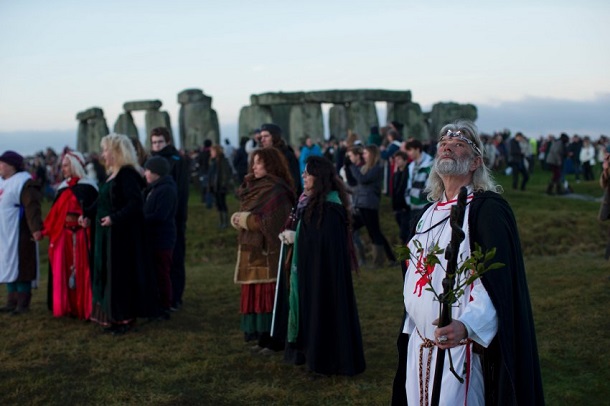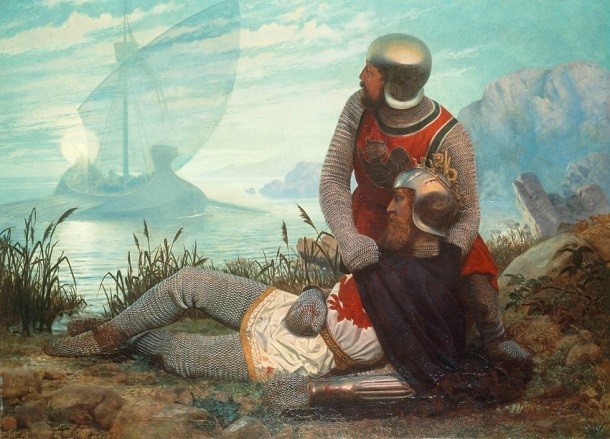A cleric created the legendary King Arthur Pendragon a myth in the service of the English crown.
Legendary King Arthur: sword-swinging, overwhelming and so what of justice! So he rides through the collective memory of the British, and he was overcoming the global heroes, space and time. With his knights of the Round Table, he struggles through novels, defeats his enemies on the big screen, loves his queen in the musical at the court of Camelot and jump through the computer game as an older brother of Harry Potter. Equipped with great props, the Holy Grail and the world’s first round table.
This is King Arthur: Icon of English history and ineradicable popular symbol of chivalry, which is long gone and yet lives on not only in the nursery. Men with helmets and lances on horseback, protected by metal hanging aprons.
What a story. This king, the British call him Arthur, died, fallen after a bloody battle – and yet remained alive. His remains were never found. But his supporters believe in his return from the island of Avalon, on which he was taken seriously wounded, they believe in him as a Messiah.
King Arthur Legend:The clues begin with Geoffrey of Monmouth

Was it really him? Or is it just a myth, a figure that was created to give an invincible, truly legendary king over to the English royal history?
The clues begin with the man who wrote the story in the Middle Ages, the desk of the first Arthurian evangelist who today would probably lead developer of a company for computer games. A “Genius”, raving literary scholar from him and’re right. For the essence, he has created, Artus, is a man, and yet holy, transcendent, incomprehensible.
About this myth-maker, Geoffrey of Monmouth, little is known: A cleric who lived in the first half of the 12th century, was appointed Bishop of St. Asaph in Wales and was considered a confidant of the British Royal Family. “Monmouth”, at least the one concrete Note: This is the name a city on the southeastern border of Wales. From this area probably originated Geoffrey, probably from the royal house was the impetus, the patches of English history to weave into a beautiful and large.
Geoffrey gave his best in 1138 he published his “History of the Kings of Britain”, it became one of the most important works of the Middle Ages. Real places and people had artfully interwoven with legends is the author. In this web of historical fiction, he placed King Arthur, for whose existence even then not too much talking. But Geoffrey seems to have had the truth less attention than the effect of his text.
Geoffrey’s use of sources is true – to say the least – as generous. Cleverly disguised this sealing chronicler, what information he relied; Had he the “History of the Britons” read, which is attributed to the early medieval monk Nennius? This is from an English military leader Arthur’s speech, said to have fought in the fifth century against the Saxons and won triumphantly first time. In Sources of the 5th century Arthur himself but does not appear.
Geoffrey’s notes are meager: Some come from the book of Archdeacon of Oxford, another of unspecified fonts and all sorts of stories. The author therefore had to bear the accusation of having written “tall tales”.
It hardly cared that. Promoted by the authorities, his work spread quickly, was translated into many languages and made into various manuscripts. This book created what you would probably call “corporate identity”, a heroic story, in which were the kings of England classified as Jesus in the family tree of Abraham and David.
King Arthur Pendragon is a horror for other rulers
Arthur is the man who takes on all the enemies of Britain – with the invading barbarians from without as well as with the inner, unprincipled rivals. The young commander defeats the Saxon hordes, battle after battle, armed with a shield, on which is emblazoned an image of the Virgin Mary. This symbol of Christianity Geoffrey connects with the abundant un-Christian figure of the magician Merlin helpful and the mysterious sword Excalibur, forged on the island of Avalon. The surprising trinity of pagan sword, shield and Christian magical Merlin makes Arthur (and that means: England) beat: Henceforth her Saxons, Scots and Picts! Peace to Britannia!
And then there’s this “innate goodness” that Arthur the affection of his subjects backs, so he can still hastily Iceland and Ireland submit. Then he has the necessary leisure, all kinds of excellent men to rally around, a circle that “the Knights of the Round Table” is mentioned later.
Such is upgraded Artus to the dismay of other rulers. You begin to “tremble” before Britannia, writes Geoffrey. And inside there was under Arthur supposedly a “sophistication”, a not be beat for “richness of ornamentation and courtly manners …”, and of course, the beautiful Queen Guinevere.
He seems unstoppable: defeat cultured Chivalrous Artus all sorts of other bad guys and a hair even Rome would be, because not messed him the home front. The opponent attacks, to adultery the crummy variety. Arthur pulls back into the battle, defeats his opponent, but is seriously injured. It follows the last journey, for wound care, he is brought to the mythical island of Avalon. He died there, or it rests only? In allusion to the Christian belief in resurrection his return is promised. From the island, he will come to judge, the living and the dead … England gets with this story, a binder, a piece of self Summon. Modern almost the author links the internal state of a company with the capability for external defense. Geoffrey has incorporated his expectations of the authorities here in the opinion of the historian.
The clergyman had been so horrified by the disputes I. (1068-1135) followed the death of Henry, the experts suggest that he longed for themselves a new Heinrich, and as this did not appear that he had created it himself – in Arthur. The author transfers surprisingly nonchalant Christian chance for resurrection on the secular ruler of Britannia. Amazing that the church had to go through such mixed cult.
King Arthur Legend:Invented and Found merged into a new reality

The imaginative story, however, makes the hero to the projection of the respective zeitgeist of later centuries. The perceived relevance created a credibility that replaced the historical truth.
Nevertheless, the lack of evidence was sometimes a weak point when rulers wanted to make use of the Arthurian legend. Then had to be something tangible, best bone, even if this conflicts with the insinuierten survival of the hero something.
End of the 12th century, beginning in the fire almost completely destroyed the monastery of Glastonbury construction work. ., King Henry II (1133-1189) can reconstruct the building, where Arthur is said to have laid to rest – in the mythology of Glastonbury the place is often equated with Avalon. Of these, the king claims to have learned through visions, a divine sign, so to speak.
The Arthurian figure gave him cohesiveness and a fascination that raised him and was useful to him, as he connected the idea of the state with a moral role model. Eagerly did Henry II. Therefore put together Arthurian chronicles and write Arthurian seals. He sat down with respect to the legendary ancestor and thus legitimized his rule in a supposedly glorious ancestry. The chain of tradition served him well in the rivalry with France, where the courtly poet Chrétien de Troyes should create a European fashion of Arthurian novels soon.
Henry’s son Richard I, known as “Lionheart” did not want to disregard standing there. In the era of the king who wore a sword named Excalibur itself, archaeological excavations took place in Glastonbury – with success: The supposed grave of King Arthur was discovered. The result is a Arthurian pilgrimage, who visited many English kings after him. Invented and Found fused here to form a new reality.
For centuries the Phantom Arthur remained the dominant figure at court, became a main figure of courtly festivities. Arthurian scenes were performed, staged tournaments and round tables. The cult went so far, that Henry VII. (1485-1509) Winchester specific to the birthplace of his son, because the “Round Table” had gathered there, supposedly. Henry VIII had himself -. Something bold – in the form of King Arthur’s painting on a giant wooden board, symbolizing the circle of the “Knights of the Round Table”.
King Arthur Legend:Arthur lives

Arthur is more than an element of folklore, he makes politics. Because with the reference to the Arthurian myth the pursuit of England was justified for dominance in Europe. His supposedly great empire should even legitimize territorial claims of the crown – on Wales and Scotland. Edward I (1272-1307) wrote in a May 1301 letter to the Pope and justified in his claim to Arthur’s heritage. The Scots resisted original and conform to the system. They showed the claims having regard to another part of the Arthurian legend: Arthur was begotten in adultery, and have therefore no hereditary claim – and England nor
What king did not put in a line with him? Quite frankly describes the publisher of the work “Tales of King Arthur” by Sir Thomas Malory in 1485, the order situation: Many noble lords of England had come to him, and had asked him to print the story of the Grail and the Christian King Arthur. He replies that some people thought that Arthur had not yet exist, and all the books about him were mere invention. As had been answered him that Arthur will be appreciated by Christians and pagans alike and chroniclers were well reported of him. And so the publisher printed from a manuscript of Malory.
The epic had to the Victorian era, as the Arthurian material again became fashionable as a fantastic counterpoint to the high-tech modernity. Even serve in the Royal Dressing Room in the Palace of Westminster, commissioned by Queen Victoria, scenes from the Arthurian legend for wall decoration.
To date, no historian has proved its existence. But true or not, this is no longer the question: Artus lives.
[adrotate banner=”67″]

